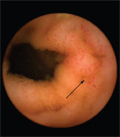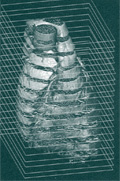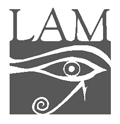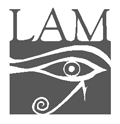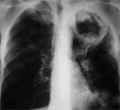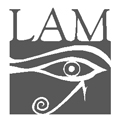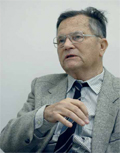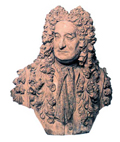The eLitMed.hu medical portal uses computer cookies for convenient operation. Detailed information can be found in the Cookie-policy.
Lege Artis Medicinae - 2007;17(08-09)
Content
[THE USE OF ACID SUPPRESSANTS IN PANCREATIC DISEASES]
[The histamine-2 receptor antagonists and the proton pump inhibitors are part of current therapeutic protocols for most diseases of the pancreas. Acid suppression is definitely recommended to improve the effect of enzyme supplements in chronic pancreatitis and in maldigestion that develop after certain gastric and pancreatic surgeries. For this purpose proton pump inhibitors should be used since they are effective and provide lasting inhibition. In cystic fibrosis, their use is indicated already in the sub-clinical stage and they are also part of the basic protocol for the treatment of Zollinger-Ellison syndrome. Acid suppressants are not routinely used in the therapeutic protocols of acute pancreatitis. Their use is well-grounded in necrotizing pancreatitis in the stage of multiple organ failure to prevent the development of stress ulcer. During enteral tube feeding, their use is indicated to protect the permanently empty stomach and because of the frequent reflux symptoms. The risk of bacterial overgrowth, which is often considered a contraindication, is insignificant if jejunal tube feeding is applied and antibiotic treatment is frequently administered.]
[ANTI-TNF-α ANTIBODY THERAPY IN CROHN’S DISEASE]
[Crohn’s disease is a chronic inflammatory disorder which may affect any part of the gastrointestinal tract. Its pathogenesis is only partially understood; various environmental and host (e.g., genetic, epithelial, immune and nonimmune) factors are involved, together initiating a chronic uncontrolled inflammation, which is partly due to an imbalance between pro- and anti-inflammatory cytokines, and a defective apoptosis of lamina propria T cells. Among proinflammatory cytokines, tumour necrosis factor- α (TNF-α) seems to play a central role in Crohn’s disease. Over the past years, the increasing knowledge on the pathogenesis of Crohn’s disease has led to the development of a number of biological agents targeting specific molecules involved in gut inflammation, including TNF-α and its receptors. This paper reviews the rationale for the use of TNF-α inhibitors in the treatment of Crohn’s disease.]
[INFLAMMATORY BOWEL DISEASE IN CHILDREN]
[The term inflammatory bowel disease includes two similar, but distinct intestinal diseases so far of unknown ethiology - ulcerative colitis and Crohn’s disease. They used to be considered diseases of young adults, but in recent decades they have become more common among children, with characteristics different from those in adults. In the past they were considered severe, incurable diseases, but today, owing to modern nutrition, medical and surgical treatment, both diseases have became well manageable, even though complete recovery can not yet be expected.]
[ANTIHYPERTENSIVE THERAPY IN VIEW OF RECENT CLINICAL STUDIES]
[Different antihypertensive agents, while having the same blood pressure lowering effect, will have significantly and clinically important different impact on the serum levels of glucose, lipids, insulin, potassium, creatinine, as well as on albumin excretion, heart rate, body weight, central pressure, various hypertensive target organ damages, and, in particular, 24-hour blood pressure dinamics. There is agreement in that the main benefits of first-line antihypertensive agents are related to the lowering of blood pressure itself. Some other drugs, however, have shown preventive and protective cardiovascular properties in certain patient groups, independent of their blood pressure lowering effect as measured traditionally.]
[NON-INVASIVE CORONARY ANGIOGRAPHY BY MULTISLICE COMPUTED TOMOGRAPHY]
[This review summarizes the diagnostic spectrum, ways of application and methodological difficulties of multislice computed tomographic (MSCT) coronary angiography. The non-invasive assessment of cardiac and coronary anatomy is now possible with computed tomographic coronary angiography using the modern 16 to 64-slice technology. This technique finds its main use today in the screening of patients with moderate probability of having coronary artery disease (atypical chest pain). Its negative predictive value varies between 97% and 99%, thus, a negative result of this non-invasive outpatient procedure can reduce the possibility of coronary artery disease to the minimum. Other important diagnostic applications include the follow-up of patients with coronary artery bypass, accurate diagnosis of coronary artery anomalies, and the simultaneous examination of the heart and great vessels. The future development of the technique is directed to coronary plaque characterization, particularly the detection of vulnerable plaques. The radiation exposure is relatively low (7-13 mSv), comparable with that of invasive coronary angiography.]
[MOLECULARLY TARGETED BIOLOGICAL THERAPY IN THE TREATMENT OF SOLID TUMOURS PART ONE - BREAST CANCER AND COLORECTAL CANCER]
[Modern biological oncotherapy of solid tumours means targeting various kinase inhibitor pathways either by specific monoclonal antibodies against extracellular receptors or ligands (trastuzumab, cetuximab, panitumumab, bevacizumab) or by small molecular weight oral kinase inhibitors that interfere with intracellular signal transduction (imatinib, sunitinib, lapatinib, erlotinib, gefitinib, sorafenib). Here we review the clinical use of targeted biological agents in breast and colorectal cancer.]
[BENEFICIAL EFFECT OF INSULIN DETEMIR ON THE BODY WEIGHT OF DIABETICS]
[Detemir is the newest base insulin analogue. In phase III trials and the PREDICTIVE study, the use of insulin detemir in various treatment regimens (basal-bolus or in combination with an oral antidiabetic) did not lead to weight gain in either types of diabetes, in contrast to what is usually observed with insulin therapy. Similar results were obtained when neutral protamine Hagedorn insulin or glargine were replaced by detemir, or insulin-naive patients received detemir as a new therapeutic regime. The mechanism of the beneficial effect on body weight is not clear yet. It may be related to the reduction in the number of hypoglycaemic episodes. It may also be associated with a stronger action of detemir on hepatocytes compared to peripheral tissues due to its acylation, which results in an effective suppression of hepatic glucose output without promoting lipogenesis in the adipocytes. Detemir reaches the insulin receptors of the hypothalamus faster than regular insulin, therefore, satiety develops in a shorter time. These hypotheses still require further studies.]
[ANALYIS OF MOTIVATIONS OF SMOKING CESSATION]
[INTRODUCTION - The aim of the study was to explore the differences in motivations between successful quitters and smokers who just consider quitting. Self-reported motivations of exsmokers' smoking cessation and the reasoning of current smokers who consider quitting were analyzed. SUBJECTS AND METHODS - The study is based on Hungarostudy Health Panel conducted in 2005, which is the second wave of Hungarostudy 2002, a national representative health survey of the adult Hungarian population. Of the subjects involved in this follow-up study, data from 3701 persons could be analyzed. RESULTS - About half of the respondents had never smoked, one fifth of them had quitted and 28 percent smoked. More than half of the current smokers (52%) contemplated on giving up smoking. Among ex-smokers and contemplating current smokers alike (38-40%), disease prevention was mentioned as the single most important reason of cessation. Financial reasons were mostly mentioned by current smokers; ex-smokers were more likely to explain their decision with deteriorating health, the occurrence of certain diseases. Among these, cardio-vascular morbidity played the most important role in smoking cessation while cancers, respiratory disease and diabetes also significantly increased the odds of quitting. Social pressure was a reason for quitting mostly among women and elderly persons. Among current smokers, those living in partner relationship and the better-off tended to entertain thoughts of quitting because of social pressure. CONCLUSION - The results confirm the importance of cardiovascular diseases in smoking cessation: although people emphasize primary preventive purposes of their cessation efforts, in fact secondary prevention, i.e., existing circulatory and heart problems play the major role both in actual cessation and in quitting considerations.]
1.
Clinical Neuroscience
Is there any difference in mortality rates of atrial fibrillation detected before or after ischemic stroke?2.
Clinical Neuroscience
Factors influencing the level of stigma in Parkinson’s disease in western Turkey3.
Clinical Neuroscience
Neuropathic pain and mood disorders in earthquake survivors with peripheral nerve injuries4.
Journal of Nursing Theory and Practice
[Correlations of Sarcopenia, Frailty, Falls and Social Isolation – A Literature Review in the Light of Swedish Statistics]5.
Clinical Neuroscience
[Comparison of pain intensity measurements among patients with low-back pain]1.
Clinical Neuroscience Proceedings
[A Magyar Stroke Társaság XVIII. Kongresszusa és a Magyar Neuroszonológiai Társaság XV. Konferenciája. Absztraktfüzet]2.
3.
Journal of Nursing Theory and Practice
[A selection of the entries submitted to the literary contest "Honorable mission: the joys and challenges of our profession" ]4.
Journal of Nursing Theory and Practice
[End of Life and Palliative Care of Newborns in the Nursing Context]5.
Journal of Nursing Theory and Practice
[Aspects of Occupational Health Nursing for Incurable Patients ]








